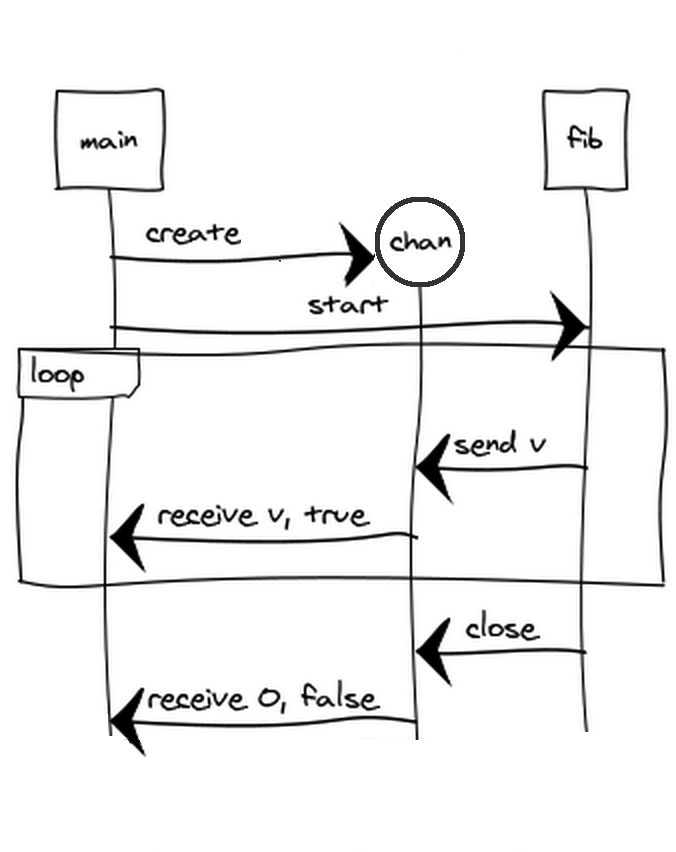Go for Pythonistas Go and the Zen of Python 禅
Go for Pythonistas
https://talks.golang.org/2013/go4python.slide#1
Things I don't like about Python (it'll be short)
Beautiful and simple
Dynamic typing - nice because it's concise, like Python.
a = "hello"
b = 1
# but also
a = 2
Static typing - can be verbose, like Java or C++.
Foo foo = new Foo();
Static typing with inferred types, like Go.
a := "hello"
b := 1
// but no
a = 2
Statically-typed Python? Check mypy and Cython.
Run time pyrotechnics
name = 'pythonista' # This code only works half of the time.
if random.random() > 0.5:
print 'hey '+name+', you win!'
else:
print 'sorry '+nane+', you lose'
I don't want start a flame war here but ...
100% code coverage is a symptom
- Code coverage should point you to untested cases.
- Not a way to find typos!
- 100% code coverage doesn't mean bug free.
Other things I don't like
- Deploying - managing dependencies.
- Performance - "not too slow" is often not fast enough.
- Magic! (e.g.:
__magic__:**kargs,__getattr__)
A list of magic methods in Python:
www.rafekettler.com/magicmethods.html
And I *do* like concurrency!
A lot has been said about Python's infamous Global Interpreter Lock.
You should watch Mindblowing Python GIL, by David Beazley.
Things I like about Python
Things I like about Python
- The Zen of Python. (Go and the Zen of Python)
- Hashes and arrays are part of the language.
- The standard library.
- Magic! A bit of code can do a lot.
A bit of code
fib.py
Have you ever heard of Fibonacci?
def fib(n):
a, b = 0, 1
for i in range(n):
a, b = b, a + b
return b def fib_rec(n):
if n <= 1:
return 1
else:
return fib_rec(n-1) + fib_rec(n-2) for x in range(10):
print fib(x), fib_rec(x)
fib.go
Something familiar?
func fib(n int) int {
a, b := 0, 1
for i := 0; i < n; i++ {
a, b = b, a+b
}
return b
}
func fibRec(n int) int {
if n <= 1 {
return 1
}
return fibRec(n-1) + fibRec(n-2)
}
func main() {
for i := 0; i < 10; i++ {
fmt.Println(fib(i), fibRec(i))
}
}
Fibonacci without generators? What?
Python generators are awesome.
def fib(n):
a, b = 0, 1
for i in range(n):
a, b = b, a + b
yield a
Mechanically complex.
f = fib(10)
try:
while True:
print f.next()
except StopIteration:
print 'done'
But very easy to use.
for x in fib(10):
print x
print 'done'
Python generators

Note the generator executes concurrently. Hmm... I like concurrency.
Go concurrency
Based on goroutines and channels.
- Goroutines: very light processing actors (the gophers).
- Channels: typed, synchronized, thread-safe pipes (the arrows).

"Generator" goroutines

"Generator" goroutines
Uses a channel send instead of yield.
func fib(c chan int, n int) {
a, b := 0, 1
for i := 0; i < n; i++ {
a, b = b, a+b
c <- a
}
close(c)
}
func main() {
c := make(chan int)
go fib(c, 10)
for x := range c {
fmt.Println(x)
}
}
"Generator" goroutines
A more generator-like style:
func fib(n int) chan int {
c := make(chan int)
go func() {
a, b := 0, 1
for i := 0; i < n; i++ {
a, b = b, a+b
c <- a
}
close(c)
}()
return c
}
func main() {
for x := range fib(10) {
fmt.Println(x)
}
}
Exercise: generating prime numbers
Write a function that returns a channel and sends the first n prime numbers on
it.
Given the function prime:
// prime returns true if n is a prime number.
func prime(n int) bool {
for i := 2; i < n; i++ {
if n%i == 0 {
return false
}
}
return true
}
Use the Go playground:
Solution: generating prime numbers
func primes(n int) chan int {
c := make(chan int)
go func() {
for i := 1; n > 0; i++ {
if prime(i) {
c <- i
n--
}
}
close(c)
}()
return c
}
func main() {
for p := range primes(10) {
fmt.Println(p)
}
}
Exercise: Fibonacci primes
Write a filterPrimes function that takes a channel of ints as a
parameter and returns another channel of ints.
All the prime numbers that filterPrimes receives from the input channel are
sent into the output channel.
Complete this code snippet:
Solution: Fibonacci primes
func filterPrimes(cin chan int) chan int {
cout := make(chan int)
go func() {
for v := range cin {
if prime(v) {
cout <- v
}
}
close(cout)
}()
return cout
}
func main() {
for p := range filterPrimes(fib(20)) {
fmt.Println(p)
}
}
But there's much more
Goroutines and channels aren't just for generators. They can be used to model
all kinds of concurrent systems.
To learn more:
- Concurrency patterns, by Rob Pike
- Advanced Concurrency Patterns, by Sameer Ajmani
Object-oriented Go
Object-oriented Go
A type declaration.
type Name struct {
First string
Middle string
Last string
}
A method declaration.
func (n Name) String() string {
return fmt.Sprintf("%s %c. %s", n.First, n.Middle[0], strings.ToUpper(n.Last))
}
Constructing a Name and using it.
n := Name{"William", "Mike", "Smith"}
fmt.Printf("%s", n.String())
Methods on anything
There's more to types than structs.
type SimpleName string
You can define methods on any type.
func (s SimpleName) String() string { return string(s) }
Or almost any type.
func (s string) NoWay()
You can only define methods on types within the same package.
Duck typing
Duck typing
If it walks like a duck ...
What defines a duck?
- Is there an explicit list of "duck" features?
- What if the duck is not exactly a duck?
s/duck/file-like object/g
Go interfaces
Simply a set of methods.
From the fmt package:
type Stringer interface {
String() string
}
fmt.Println calls the String method if the parameter is a Stringer.
n = Name{"William", "Mike", "Smith"}
fmt.Println(n)
A type with all the methods of the interface implements the interface.
Implicit satisfaction == No "implements"
Structural typing: it doesn't just sound like a duck, it is a duck.
And that's checked at compile time.
Decorators
Decorators
A convenient way to wrap a function.
def auth_required(myfunc):
def checkuser(self):
user = parse_qs(urlparse(self.path).query).get('user')
if user:
self.user = user[0]
myfunc(self)
else:
self.wfile.write('unknown user')
return checkuser
A function can be decorated using @.
class myHandler(BaseHTTPRequestHandler):
@auth_required
def do_GET(self):
self.wfile.write('Hello, %s!' % self.user)
Decorators
If we run it.
try:
server = HTTPServer(('', PORT_NUMBER), myHandler)
server.serve_forever() except KeyboardInterrupt:
server.socket.close()
This is unauthorized:
This is authorized:
Decorators in Go?
Not exactly, but close enough.
Go doesn't provide decorators in the language, but its function literal syntax and simple scoping rules make it easy to do something similar.
var hiHandler = authRequired(
func(w http.ResponseWriter, r *http.Request) {
fmt.Fprintf(w, "Hi, %v", r.FormValue("user"))
},
)
A wrapper function.
func authRequired(f http.HandlerFunc) http.HandlerFunc {
return func(w http.ResponseWriter, r *http.Request) {
if r.FormValue("user") == "" {
http.Error(w, "unknown user", http.StatusForbidden)
return
}
f(w, r)
}
}
Decorators in Go?
func main() {
http.HandleFunc("/hi", hiHandler)
http.ListenAndServe(":8080", nil)
}
This is unauthorized:
This is authorized:
Exercise: errors in HTTP handlers
In Go, functions can return errors to indicate that something bad happened.
The net/http package from the standard library defines the type HandlerFunc.
type HandlerFunc func(ResponseWriter, *Request)
But it's often useful to unify the error handling into a single function to avoid
repetition.
type errorHandler func(http.ResponseWriter, *http.Request) error
Write a decorator that given a errorHandler returns a http.HandlerFunc.
If an error occurs it logs it and returns an http error page.
Exercise: errors in HTTP handlers (continuation)
Given the function handler.
func handler(w http.ResponseWriter, r *http.Request) error {
name := r.FormValue("name")
if name == "" {
return fmt.Errorf("empty name")
}
fmt.Fprintln(w, "Hi,", name)
return nil
}
We want to use it as follows.
http.HandleFunc("/hi", handleError(handler))
Implement handleError using the playground.
Solution: errors in HTTP handlers
func handleError(f errorHandler) http.HandlerFunc {
return func(w http.ResponseWriter, r *http.Request) {
err := f(w, r)
if err != nil {
log.Printf("%v", err)
http.Error(w, "Oops!", http.StatusInternalServerError)
}
}
}
// Fake request without 'name' parameter.
r := &http.Request{}
w := newDummyResp()
handleError(handler)(w, r)
fmt.Println("resp a:", w)
// Fake request with 'name' parameter 'john'.
r.Form["name"] = []string{"john"}
w = newDummyResp()
handleError(handler)(w, r)
fmt.Println("resp b:", w)
Monkey patching
Monkey patching
"A monkey patch is a way to extend or modify the run-time code of dynamic languages without altering the original source code." - Wikipedia
Monkey patching
Also known as "duck punching" ... poor duck.
Often used for testing purposes.
For example, say we want to test this function:
def say_hi(usr):
if auth(usr):
print 'Hi, %s' % usr
else:
print 'unknown user %s' % usr
Which depends on a function that makes an HTTP request:
def auth(usr):
try:
r = urllib.urlopen(auth_url + '/' + usr)
return r.getcode() == 200
except:
return False
Monkey patching
We can test say_hi without making HTTP requests by stubbing out auth:
def sayhitest():
# Test authenticated user
globals()['auth'] = lambda x: True
say_hi('John') # Test unauthenticated user
globals()['auth'] = lambda x: False
say_hi('John')
Gopher punching!
The same effect can be achieved in Go.
func sayHi(user string) {
if !auth(user) {
fmt.Printf("unknown user %v\n", user)
return
}
fmt.Printf("Hi, %v\n", user)
}
Which depends on
var auth = func(user string) bool {
res, err := http.Get(authURL + "/" + user)
return err == nil && res.StatusCode == http.StatusOK
}
Gopher punching!
Our test code can change the value of auth easily.
func TestSayHi() {
auth = func(string) bool { return true }
sayHi("John")
auth = func(string) bool { return false }
sayHi("John")
}
Conclusion
Go is a bit like Python
- simple
- flexible
- fun
but a bit different too
- fast
- concurrent
- statically typed
Disclaimer :
- "No pythons, ducks, monkeys or gophers were harmed while writing this talk"
Try it
Next steps
Learn Go from your browser
The community: golang-nuts
groups.google.com/d/forum/golang-nuts
Go and the Zen of Python
https://talks.golang.org/2012/zen.slide#1
Go for Pythonistas Go and the Zen of Python 禅的更多相关文章
- Zen of Python
Zen of Python $ python Python 3.5.2 (v3.5.2:4def2a2901a5, Jun 25 2016, 22:01:18) [MSC v.1900 32 bit ...
- funny_python 00 The Zen of Python
# 打算每天多动的时候尽量搜索一些和coding相关的funny stuff Day 00 - PEP 20 The Zen of Python 在shell里面输入python -m this 回车 ...
- python之禅 the zen of python
>>> import this The Zen of Python, by Tim Peters Beautiful is better than ugly. Explicit is ...
- Python import this : The Zen of Python
>>> import thisThe Zen of Python, by Tim Peters Beautiful is better than ugly.Explicit is b ...
- Python彩蛋--zen of python
今天早上在公交上浏览博客的时候,发现了python里面的一个小彩蛋--zen of python 一首python之歌 我们来看一看... 是不是很简单,在python shell 里 输入 im ...
- Zen of Python(Python的19条哲学)
The Zen of Python Beautiful is better than ugly. Explicit is better than implicit. Simple is better ...
- 趣闻|Python之禅(The Zen of Python)
在Python解释器中输入“import this”会发生什么?如果你不知道这个彩蛋,推荐继续阅读这篇文章. 2001年秋,Foretec(一家会议组织公司)正在准备召开第十届Internationa ...
- Python的设计哲学--zen of Python
Python的设计哲学--zen of Python Beautiful is better than ugly. 优美胜于丑陋 Explicit is better than ...
- Import This - The Zen of Python
The Zen of Python -- by Tim Peters Beautiful is better than ugly.Explicit is better than implicit.Si ...
随机推荐
- OJDBC版本区别
classes12.jar,ojdbc14.jar,ojdbc5.jar和ojdbc6.jar,ojdbc7.jar的区别与差异 [转 原文:https://yq.aliyun.com/wenji/2 ...
- 学习DOS,个人笔记
在win中\表示根目录, 在linux中/表示根目录 注意: 有些家庭版的系统会选择性的调用命令的,有的命令虽然有那个文件,但是不能使用..... dir 命令 英语全称 ...
- 前端面试题归类-css
一.说下盒模型? 有两种盒模型,W3C盒模型和IE盒模型通常说的"IE盒子模型"指的是IE5.5,IE6及其以后,盒模型都为 content-box当浏览器未设置<!doct ...
- java并发包工具(java.util.Concurrent)
一.CyclicBarrier 作用:所有线程准备好才进行,只要一条线程没准备好,都不进行 用法:所有线程准备好以后调用CyclicBarrier的await方法,然后主线程执行CyclicBarri ...
- Above the Median
http://www.forioi.com/p/3212 农夫约翰把他的N(1<=N<=1e5)奶牛排在一排来衡量他们的高度,牛i有:高度H_I(1<=H_I<=1e9)纳米– ...
- Java并发包源码学习系列:CLH同步队列及同步资源获取与释放
目录 本篇学习目标 CLH队列的结构 资源获取 入队Node addWaiter(Node mode) 不断尝试Node enq(final Node node) boolean acquireQue ...
- [日常填坑系列]CAP食用指南-版本引用问题
一.前言 最近,由于好久没升级底层框架,一直用着netcore2.2版本,导致有些包没能更新到最新的版本,例如:CAP. 然而,在最近升级到CAP:3.1.2版本的时候,发现有点小坑,只能退回到CAP ...
- LeetCode200 岛屿的个数
给定一个由 '1'(陆地)和 '0'(水)组成的的二维网格,计算岛屿的数量.一个岛被水包围,并且它是通过水平方向或垂直方向上相邻的陆地连接而成的.你可以假设网格的四个边均被水包围. 示例 1: 输入: ...
- LRU缓存的实现
文章目录 LRU简介 LRU算法分析 实现代码 节点类 双向链表 LRUCache类 测试类 总结 LRU简介 LRU是"Least Recently Used"的简写,意思是最近 ...
- 理解C#中的 async await
前言 一个老掉牙的话题,园子里的相关优秀文章已经有很多了,我写这篇文章完全是想以自己的思维方式来谈一谈自己的理解.(PS:文中涉及到了大量反编译源码,需要静下心来细细品味) 从简单开始 为了更容易理解 ...
